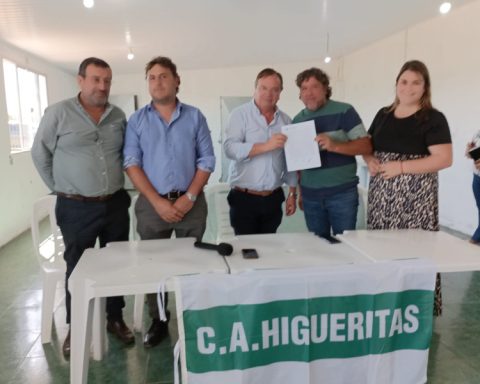In the national rodeo there are 11,888,692 cattleas estimated by the Ministry of Livestock, Agriculture and Fisheries (MGAP), based on data from the Livestock Controller Division (Dicose), declared in the National Livestock Information System (SNIG), after the year ended last 30 of July.
84% of the Dicose data has been analyzed, so these are estimated data.
Minister Fernando Mattos said that despite the high levels of slaughter recordedwhich reached record numbers “stability” has been seen.
“A high extraction, of 25% as verified, with a slaughter record and the maintenance of the bovine stock is very good news. We are in balance, this is sustainable and sustainable over time”, indicated the hierarch in dialogue with The Observerafter a press conference in which he highlighted that in 2021 it was said that a slaughter of 2.5 million heads per year was sustainable over time.
The cattle herd suffered a slight decline, last year there were 11,911,115 animals of this species.
The estimated data comes from 84% of the affidavits already analyzed. According to estimates from the SNIG, just as it happened in 2021, in the framework of Expo Prado 2022, in September, preliminary data will be presented.
Almost 3 million calves
Wintering steer and cow categories dropped in stockwhich is explained by slaughter, while calves increased in quantity, reaching a total of 2.9 million.
The head of the MGAP maintained: “We have high chances of announcing the 3 million calves next year.” That category was up 3% from last year.
Mattos indicated that throughout the year the producers set a high level of prices for the farm, and in this framework they could have withdrawn the cows from the breeding system to send them to slaughter and thus obtain a good value for it, but, nevertheless, They decided to keep them in the rodeo, “which indicates that there is a commitment and confidence in future development, that calves are also worth a lot as a breeding category.” For the minister, there you can see “a very healthy balance.”
Secondly, it is estimated that the stock of dairy cattle increased 2% compared to the previous year, and would be located in 724,889 copies.
Data from Dicose.
sustainable extraction
Conrado Ferber, president of the National Meat Institute (INAC), told The Observer that with the data presented “it is confirmed that an extraction of 2.7 million heads like the one that was done, is sustainable as long as the 3 million calves are born that we need them to be born and that they should be the floor of our production”.
Beyond the high levels of slaughter “there was no reason for the stock to drop significantly”, he said because the last levels of calf births were good and live exports fell, he explained.
These data were expected and from the INAC it is seen with good eyes a “rejuvenated” stock.
The stock of wintering cows was estimated 6% lower than last year, and the category of steers over three years old 10% less; while it was estimated that breeding cows increased 1%.
In the first half of the year the task was very stronghighlighted Ferber, until in the middle of the year the weather made itself felt in the development of pastures, the supply of cattle dropped and several meatpacking plants stopped their activities.
Currently, the accumulated growth of the slaughter “was canceled”he said, and the accumulated levels are similar to those of last year.
High levels of extraction are expected to occur again in the coming weeks. “For now, won is not missing and will not be missing,” he assured.
more sheep
Secondly, the sheep stock grew 1%, it is estimated that there are 6,266,195 animals of this species in the country. The minister indicated that “despite what many predicted, there was a commitment to good sheep breeding.” The president of INAC said for his part that, with the figures presented, “it is demonstrated that when there are good prices, the producer begins to produce more lambs.”

Data from Dicose.
An “archaically digitized” MGAP
MGAP authorities highlighted the use of digital systems by livestock producers. 80% of the affidavits were made electronicallywhile 20% in paper format.
Minister Mattos highlighted that, among other things, this makes it possible to have the data available earlier so that the actors linked to the production chain can make decisions.
The undersecretary of the ministry, Juan Ignacio Buffa, valued the use of electronic tools as very positive, given that, within the MGAP they are “dedicated to a great digitization process,” he said, since “without a doubt, digital saves many costs to producers and that is what we are going for, because we are in a ministry that is archaically digitized”.















